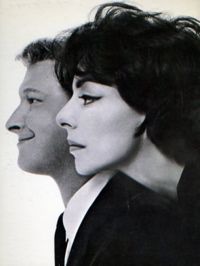Zuska: Who Needs Health Insurance When You Can Sponsor a Car Wash?!?! Friends and family of uninsured shooting victim Heather Sherba raise money for her medical bills by washing cars.
Maud Newton: On the melding of fact and invention in fiction II
David DiSalvo at Neuronarrative: I Must Be Guilty--The Video Says So. Researchers find that subjects confess to thefts they did not commit when faced with fake video evidence of their “crimes”.
Rosalind Joffe: When Chronic Illness and Marriage Collide
Suzie at Echidne of the Snakes: Looking Down on the South
Stephen Fry: Confession. Fry "registers his retinal striations" with the U.S. Department of Homeland Security. "If you can picture the response of a US immigration official asked to reschedule a biometric session because it clashes with a game of cricket then you can picture a stolid stare of stony disbelief."
Ideas in Food: Reheating the Pizza
Jade Park: A is for Aub Zam Zam
In the Haight, just a few blocks from Golden Gate Park, in the heart of hippiedom, sits a very un-hippie place: the Aub Zam Zam room. A martini bar. And inside the bar used to reside a very decidedly anti-hippie bartender: Bruno. Bruno Mooshei, to be exact (Bruno passed away about nine years ago but the bar still remains). And Bruno hated hippies. I watched him kick person after person out of the bar with a frank, “I’m going to have to ask you to leave,” or “I think you would like it a lot better at the bar down the street.”This piece is part of Alphabet: A History, which is a blog effort to write one's way through the alphabet with a series of memoir pieces, one for each letter. See also Park's B is for Boys, Charlotte's Web's A is for Africa, Everything In Between's A is for Anna, and City Wendy, who seems to have started it all.
 San Francisco Museum of Modern Art Blog: Four Dialogues 4: On Elaine May
San Francisco Museum of Modern Art Blog: Four Dialogues 4: On Elaine MaySome history first. Mike Nichols and Elaine May meet at the University of Chicago, two young American Jews who “loathed each other on sight.” Both had studied the Stanislavski Method, and were part of The Compass, a nightclub group that pioneered sketch improv comedy in the mid-1950s. (Compass would later become The Second City, a crucible for many of the actors on Saturday Night Live, Strangers with Candy, The Daily Show etc.) In 1957 Nichols and May split off and become immensely successful, quickly getting spots on TV and then on Broadway, releasing records, and so on. Then in 1962 they break up. And there is an ambition, on both of their parts, to bring their style of comedy to Hollywood. Nichols make Who’s Afraid of Virginia Woolf? (1966), which wins awards, and The Graduate (1967), which is a huge commercial success. May writes plays and enters cinema a bit later, as a writer and actress. She’s perhaps less instantly successful, but eventually starts directing too; her films are A New Leaf (1971), The Heartbreak Kid (1972), Mikey and Nicky (1976), and the notorious Ishtar (1987). For her part, critic Pauline Kael deplores the influence their style of comedy has on movies in the late 1960s. “Nichols-and-May” becomes a kind of shorthand for her, for a “crackling, whacking style [that] is always telling you that things are funnier than you see them to be.” (from Reeling, 1976)




Shakesville is run as a safe space. First-time commenters: Please read Shakesville's Commenting Policy and Feminism 101 Section before commenting. We also do lots of in-thread moderation, so we ask that everyone read the entirety of any thread before commenting, to ensure compliance with any in-thread moderation. Thank you.
blog comments powered by Disqus